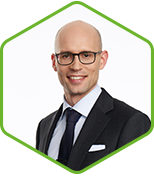Ever since large clinical outcome studies in the 1990’s demonstrated that tight blood glucose control, as measured by glycated haemoglobin (HbA1c), is able to slow down the progress of diabetes-related complications, HbA1c is regarded as the gold standard to evaluate the clinical efficacy of new anti-diabetes compounds in clinical trials as well as the most important biomarker to guide the individual treatment of patients with diabetes. Furthermore, much more recently (since 2010), various diabetes societies and the World Health Organization (WHO) have accepted the use of HbA1c in screenings to diagnose diabetes, mainly type 2 diabetes (T2D). Despite its long-time status as gold standard parameter to assess diabetes therapy, many limitations of the HbA1c-value have been discussed in literature and experts in the field of diabetes are now saying that HbA1c alone is not enough and other parameters have to be considered for drug approval and treatment success. In this text the strengths and limitations of HbA1c and its role in future diabetes therapy are discussed.
|
Discovered by Iranian doctor Samuel Rahbar in 1968, HbA1c is a minor component of human haemoglobin formed by condensation of glucose to alpha- and beta-chains of the haemoglobin Hb A variant. In principle, the higher the blood glucose concentration, the more haemoglobin will be glycated. As the lifespan of red blood cells in which the haemoglobin is present is 120 days, HbA1c provides an estimate of the average glucose control in a human being over that period. However, one must be aware that due to the continuous turnover of red blood cells and haemoglobin the contribution of average glucose to HbA1c for the last month is highest, around 50%. In a person with normal glucose control, HbA1c values are low and stable around 5% (31 mmol/mol). In patients with uncontrolled diabetes, values are typically higher than 6.5% (47 mmol/mol). |
The value of HbA1c for a single patient
The ADA Standards of Medical Care 2017 recommend routine testing of HbA1c in all patients with diabetes. The frequency of testing may vary from patient to patient depending on the level of glycemic control and on any treatment changes, but even patients with stable and well-controlled glycemia should have their HbA1c checked at least twice per year. It is believed that the routine testing provides an opportunity for more timely treatment adjustments. These recommendations are expert opinion rather than evidence-based, but seem very plausible provided that HbA1c is a good indicator of an individual patient’s glycemic control. In the most recent issue of Diabetes Care this assumption is however being challenged by experts in the field.
The first criticism is that HbA1c cannot reliably estimate average glucose in a single patient. In a pooled analysis (n=387 patients with type 1 and type 2 diabetes), average glucoses determined from individual CGM traces during a 2-3 month period, were correlated to the individual HbA1c-value. For any given HbA1c-value between 6% (42 mmol/mol) and 10% (86 mmol/mol), the 95% CI is at least 62 mg/dL wide. For a patient with an HbA1c value of 8% (64 mmol/mol) this for example means that the average glucose control most likely falls between 155 and 218 mg/dL. Without knowing the true average glucose for the patient, HbA1c is thus unable to differentiate between good, average or poor glycemic control.
A second criticism is that a marker for average control fails to provide crucial information on the occurrence of (severely) low and high blood glucose values. The general consensus is that time-in-range (70-180 mg/dL) supported by time spent below and above range provides highly valuable information beyond HbA1c and can be better linked to a patient’s feeling of well-being. A prerequisite for moving beyond HbA1c to measures based on individual glucose profiles is the availability of high-performance CGM technology. It is true that within the last ten years CGM accuracy has improved greatly from about a 25% to a 10% mean error from laboratory or fingerstick spot glucose measurements. CGM performance can however not yet be taken for granted: the reported accuracy metrics are means for a system and low performance in individual patients will occur even with the most advanced systems available.

The value of HbA1c for a patient population
In clinical trials, HbA1c is used to evaluate the efficacy of an investigational product by assessing the HbA1c-lowering in a patient population. FDA and other regulatory agencies single out HbA1c as the primary endpoint of choice and its lowering will support a notion of glycemic control. The large variation in HbA1c values for patients with identical average glucoses is not a real issue when comparing treatment effects between groups. HbA1c does of course neither provide any information on the rate of hypo- and hyperglycemia nor on glucose variability, requiring the use of other methods for such assessments.
The future for HbA1c
The value of HbA1c for clinical efficacy studies is undisputed. The ease of doing an HbA1c test, also for diagnostic purposes, will make this biomarker stay around for a bit longer. However, when using HbA1c in personalised diabetes therapy its meaning and limitations must be understood. CGM is a valuable tool to assess metrics beyond HbA1c that can guide treatment decisions on an individual patient basis. However, CGM technology too has its limitations and its derived metrics currently lack a clinical validation in large outcome studies. Stimulation of the use of professional CGM in clinical studies with intermittent measurement periods is highly desirable. In current daily practice it will not be realistic to implement CGM on a frequent basis for all patients, due to availability, costs and technology acceptance and HbA1c will remain the major marker of glucose control for many patients in coming years. Low performance of CGM technology in individual patients is a commonly reported and widely ignored problem, which seems odd given the similar reasoning that HbA1c may not be a good indicator for a single patient. With further advancement and uptake of CGM technology it seems however only a matter of time before its derived metrics will take over as new gold standard for diabetes therapy.




